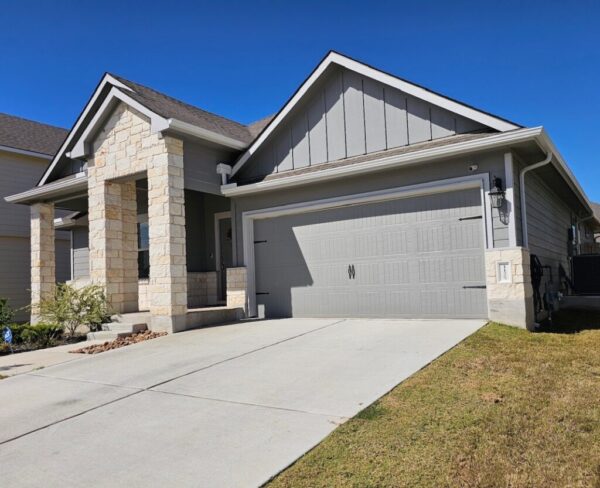
Most homeowners view their roof as an expense—an inevitable cost to bear when leaks spring or shingles curl. But what if we started thinking about our roofs not as liabilities, but as long-term assets?
A roof is more than a cover. It’s a capital investment that protects every other part of your property. With proper care, it can increase home value, improve energy efficiency, and extend the life of the entire structure.
So if you’re considering a roof replacement or already invested in residential roofing improvements, it’s time to treat your roof like what it truly is: one of the most valuable assets in your homeownership portfolio.
Think Long-Term: The Lifecycle Value of a Roof
While a new kitchen might boost your home’s appeal, few renovations offer the same protective return on investment as a new roof. A properly installed asphalt roof can last 20–30 years. Metal and tile roofs can go beyond 50.
That’s decades of shielding your home from water, wind, snow, and heat. The longer your roof performs without failure, the higher its cumulative return—especially if you’re planning to stay put or sell with confidence.
A good roofing contractor doesn’t just build for today—they plan for the full life cycle. That’s why roof longevity starts with proper installation, continues with scheduled maintenance, and evolves with inspections.
Know the Triggers That Impact Value
Roof value isn’t static. It can rise or fall based on environmental conditions, structural changes, or the decisions you make during renovations. Here are a few factors that can increase—or decrease—your roof’s value over time:
- Climate Exposure: Regions with heavy storms or long winters wear down roofing materials faster.
- Ventilation and Insulation: Poor airflow can warp roof decking and shorten shingle life.
- Material Selection: Premium materials generally last longer but only if properly installed.
- Contractor Skill Level: An inexperienced installer may compromise underlayment, flashing, or drainage.
When homeowners cut corners in these areas, they’re not just risking leaks—they’re losing value on a high-ticket component of their home.
Roof Replacement vs. Repair: Strategic Decision-Making
It’s not always obvious whether you need a simple patch or a full overhaul. A roof replacement can be expensive—but so can chasing small repairs that add up year after year.
If your roof is past 70% of its expected lifespan, or showing signs of widespread deterioration (like curling, granule loss, or consistent leaks), replacing it might be the smarter investment.
On the flip side, newer roofs with isolated damage are often great candidates for targeted roof repair.
A trusted roofing contractor like Strive Roofing & Construction will always assess your roof’s age, structure, and damage zones before recommending a solution. They understand that true value lies in honesty, not upsells.
Protect Your Warranty—Protect Your Value
Your roof likely comes with a warranty—sometimes two: one from the manufacturer and one from the installer. But here’s the catch: warranties can be voided.
Ignoring maintenance, installing mismatched materials, or adding unauthorized accessories (like solar panels without proper flashing) can eliminate your coverage.
Maintaining your warranty status helps preserve the roof’s resale value. Buyers and inspectors will ask. Documentation matters.
Make it a habit to keep records of all roof-related work—repairs, cleanings, inspections, and contractor visits. It’s the paper trail that reinforces your asset’s integrity.
Preventative Maintenance = Financial Preservation
Just like a car or HVAC system, your roof needs regular attention. Waiting for a major leak before acting is like waiting for an engine to seize before changing the oil.
Here are a few high-value maintenance habits:
- Seasonal inspections (especially after storms)
- Gutter cleanings to prevent water backup
- Moss and algae removal to reduce surface degradation
- Trimmed tree limbs to prevent impact damage
- Attic checks for signs of moisture or mold
Small actions, performed consistently, can add years to your roof’s lifespan and save thousands in reactive repairs.
Think Beyond Shingles: Whole-System Care
A quality roof is more than shingles. It includes:
- Flashing around vents and chimneys
- Drip edges to guide water away from fascia
- Proper decking and underlayment as foundational support
- Ventilation systems to regulate moisture and temperature
- Seamless integration with gutters for efficient runoff
Investing in full-system care increases roof performance and prevents overlooked weak spots from turning into emergencies.
Residential roofing isn’t a surface project—it’s a system solution.
Selling Your Home? A Good Roof Is Leverage
In real estate, a roof in excellent condition can close deals faster—and for more money. A roof replacement done recently can be a powerful marketing tool. Buyers view it as one less risk they need to absorb.
On the flip side, an aging or damaged roof can trigger failed inspections, insurance complications, or mandatory escrow repairs.
Whether or not you’re planning to sell, protecting roof value protects home value. They’re tightly connected.
Final Thought: Assets Need Attention
Every dollar you invest in your roof is a dollar invested in long-term peace of mind. But like any asset, it needs protection, strategy, and expert support to perform.
Strive Roofing & Construction reminds homeowners that roofing isn’t about chasing emergencies—it’s about building lasting value. Whether you’re considering a roof replacement, exploring better materials, or just scheduling a check-up, the right guidance ensures your roof serves you for decades, not just seasons.